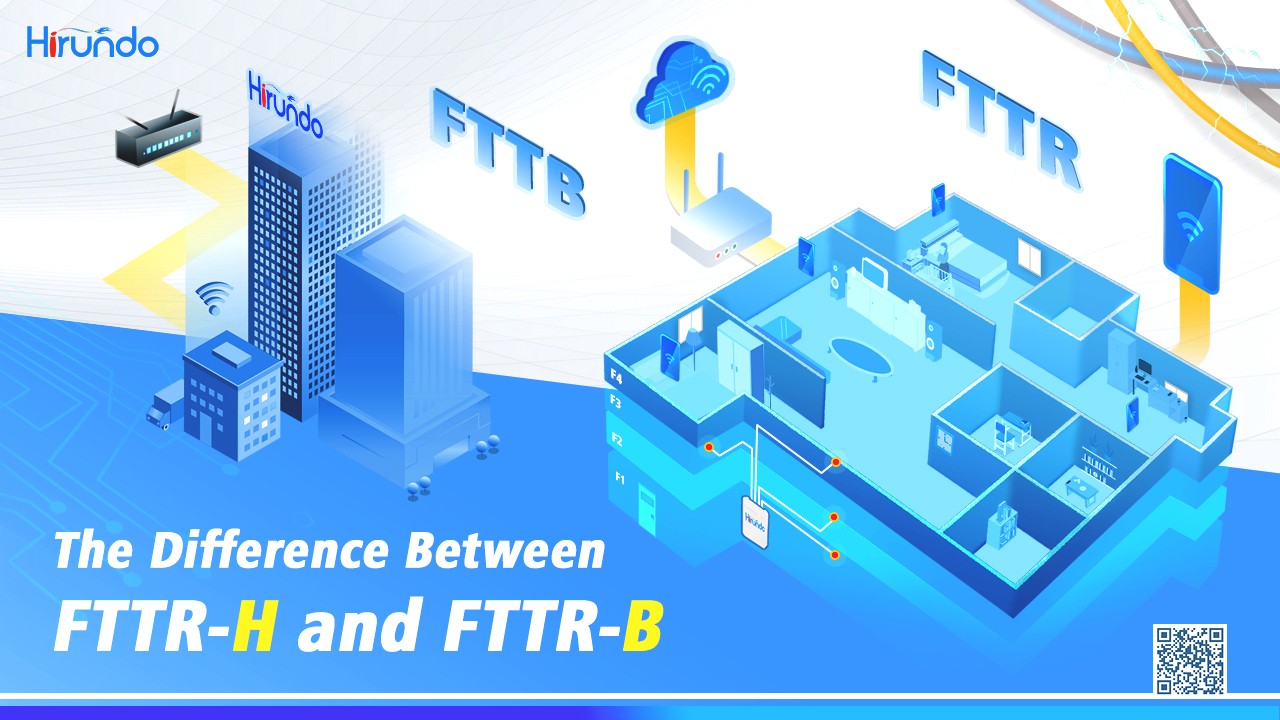
FTTR- Interpreting the differences in fiber access technology
What is FTTR ?
Some people say that FTTR is the OG of family networking.
effectively help to improve the family network,
some people say that it is high cost, not worth it.
Today we come to understand it !
Optical fibers replace traditional network cables.
Technology that enables gigabit network coverage in all rooms
of the house through the deployment of all-optical devices

Low delay :
Because the transmission speed of optical fiber is much faster than the network cable, fttr whole house optical fiber can reduce the network delay and improve the network response speed.
Upload and downlink rate is high :
Because the bandwidth of optical fiber is much larger than the network cable, fttr whole house optical fiber can improve the upload and download rate of the network, to meet the needs of high-quality services such as high-definition video and cloud games.
The connection is stable :
because the fiber is not affected by electromagnetic interference and temperature changes, the fttr whole-house fiber can ensure the stability of the network and avoid signal interruption or packet loss.
Does FTTR really mean higher network speeds ?
Since fiber can be transmitted over long distances without attenuation, fttr whole-room fiber can achieve whole-room network coverage without the need for additional Repeaters or extenders.
FTTR-H

Home FTTR is the home all-optical networking scheme. By upgrading the transmission media, upgrading the equipment, and simplifying the network, it solves the high-frequency family networking problems such as old terminals, substandard transmission media, and mismatched packages in one step.
FTTR-B

The Business FTTR is a Wi-Fi solution specifically designed for enterprises in enterprise scenarios. The all-optical networking scheme of optical fiber access + photoelectric composite cable +Wi-Fi6 is used to cover every corner of the enterprise with Wi-Fi.
The office optical solution provides enterprises with an over gigabit experience and solves the internal network bottleneck in one step.
The difference between FTTR-H and FTTR-B .
Coverage :
TFTR-H mainly refers to the extension of fiber access technology from the central office (CO) to every residence. It provides a more direct and high-speed fiber connection, enabling users to enjoy high-quality network services. FTTR-B refers to the extension of fiber optic access technology from the central office (CO) to the interior of the building, usually a multi-family residential or commercial building.
Network topology :
FTTR-H generally adopts point-to-point optical fiber connection, that is, each user has an independent optical fiber line access. This allows for higher bandwidth and better quality of service. Tptr-b adopts a point-to-multipoint topology, and multiple users share an optical fiber line, which requires optical division multiplexing technology to achieve.
Technical difficulty and cost :
Because TFTR-H requires fiber access to every residence, a large number of fiber lines need to be laid throughout the network, which increases the technical difficulty and cost. FTTR-B, on the other hand, only requires fiber access to the interior of the building, making it relatively easy to implement and manage.
Number of users :
FTTR-H is suitable for single family homes, can provide higher bandwidth and quality of service, suitable for home users with high network performance requirements. Tftr-b is suitable for multi-family residential or commercial buildings and can meet the access needs of multiple users, but the bandwidth may be limited due to sharing a fiber optic line.
Different equipment forms:
FTTR-H:
The master/slave gateway adopts a plastic shell, which is light and easy to shape, which can reduce the overall weight of the equipment and make it easier to install.
FTTR-B:
Main gateway adopts metal body, secondary gateway adopts plastic shell, according to the requirements of enterprise gateway product specifications, better heat dissipation performance, higher environmental adaptability, MTBF performance is more stable.

In general, FTTR-H is suitable for single-family homes with higher network performance requirements, while FTTR-B is suitable for multi-family homes or commercial buildings where the cost is relatively low but the bandwidth may be limited.